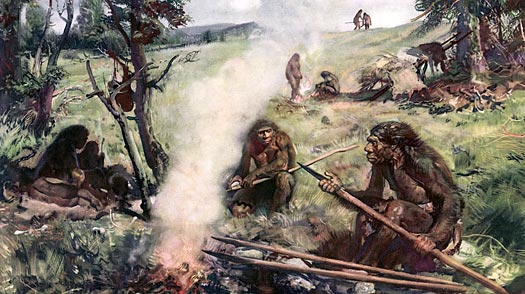Multicellular organisms may exist before the Cambrian Period
After analyzing some fossils discovered in Kazakhstan, the team led by geologist George Mierte, of the University of Florida (USA), discovered that multicellular organisms can begin to evolve in the Before the Cambrian period, 100 million years earlier than the previous calculation of the scientific world.
* Discover an additional strain of ancient people in Siberia

Image for illustrative purposes.
Previously, scientists identified the evolutionary history of the vast majority of modern organisms in the Cambrian period.
During the Cambrian period, multicellular life flourished, including some hard-shell organisms that first appeared.
This finding is important to reinforce the view of evolution.
Research results have been published in the online magazine Gondwana Research.
*
***
Discovered another strain of ancient people in Siberia
Archaeologists have discovered fossils of ancient mystic bones in a cave in Siberia.

Artwork of the life of the Neanderthal family. (Photo Time.com)
This finding shows that in the ancient ancestor family 30,000 years ago, in addition to modern ancestors and extinct Neanderthals, there is still a third class of ancient people.
According to scientists, the newly discovered ancient human fossil named " Denisova ," was discovered by archaeologists at Denisova Cave, located in the Altai Mountains, south of Siberia.
In 2008, archaeologists discovered fossil bones, human teeth and many objects in Denisova cave. DNA test results found that these fossils were from a girl about 5 to 7 years old.
On that basis, scientists judged "Denisovans" to walk on two legs, but the bodybuilding structure was completely different from modern humans and Neanderthals.
- Discover Cambrian multicellular fossil fossil in China
- Creating multicellular life in vitro
- We will not exist if this event did not happen 600 million years ago
- Root the explosion of life on Earth
- Find the deepest animal
- The explosions of life
- The prehistoric, headless prehistoric predator
- Scientists have figured out why our men exist
- 9 reasons Darwin's theory of evolution is wrong
- Anomalous way of digesting organisms without organs
- Vietnamese queens are listed in 10 impressive species in 2015
- Species hide thousands of years deep in the Earth's heart
 Discovered an ancient centipede fossil 99 million years old
Discovered an ancient centipede fossil 99 million years old Discovered bat-like dinosaurs in China
Discovered bat-like dinosaurs in China Discovered a 200-year-old bronze cannon of the coast
Discovered a 200-year-old bronze cannon of the coast Discover 305 million-year-old spider fossils
Discover 305 million-year-old spider fossils